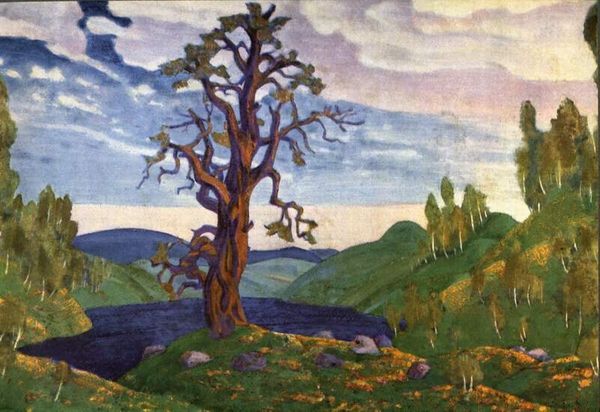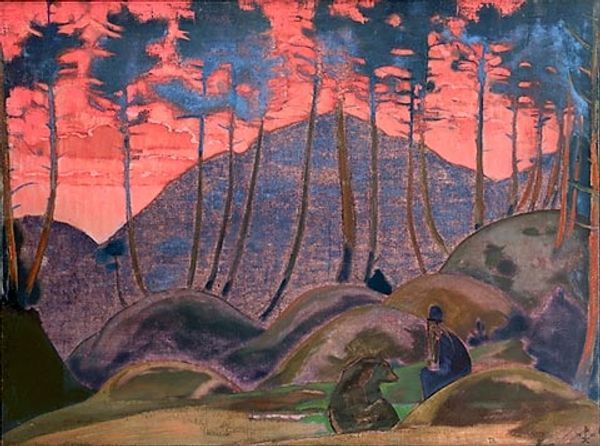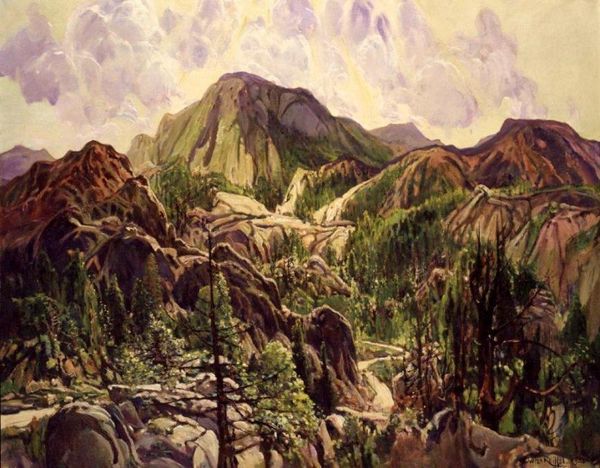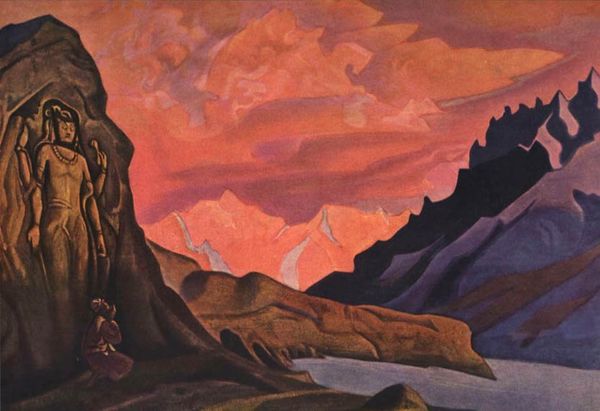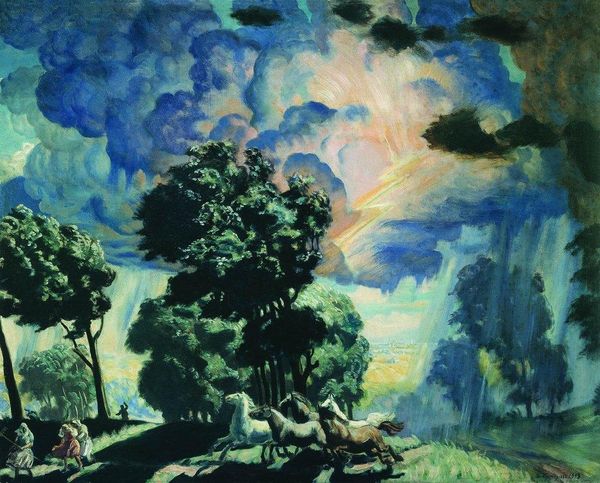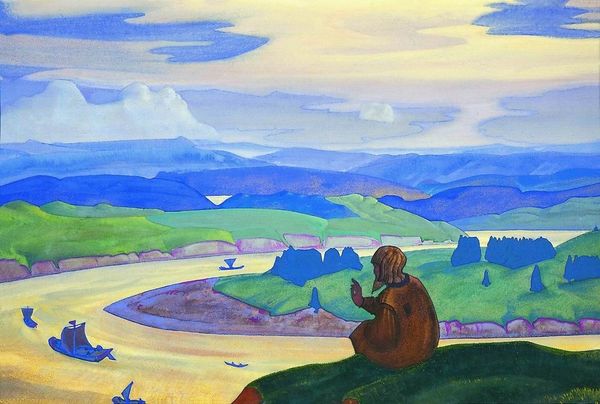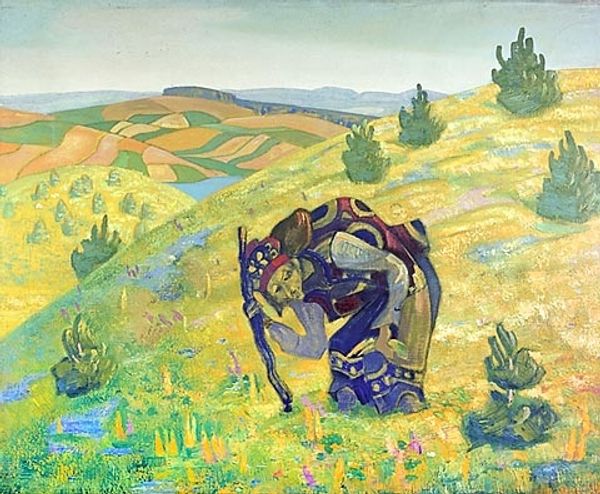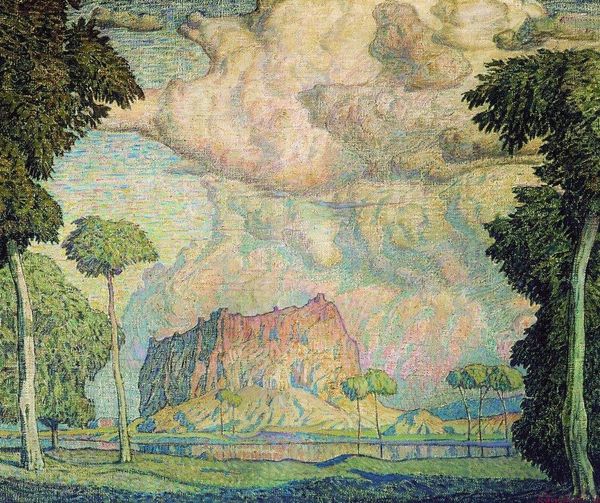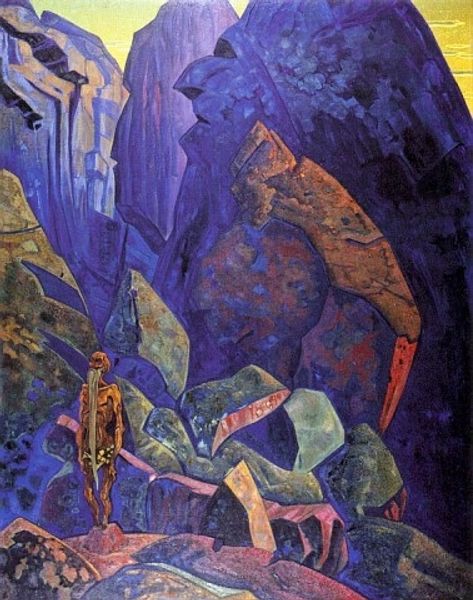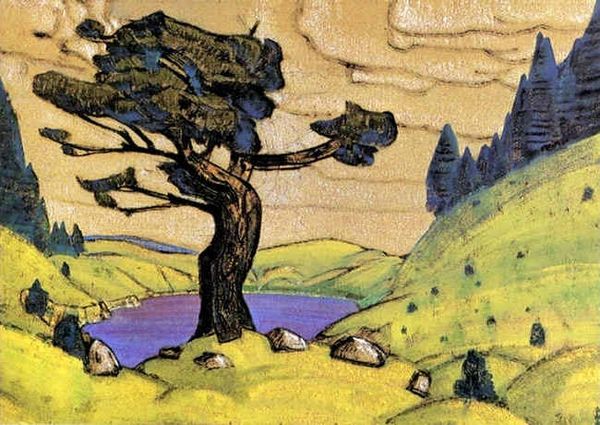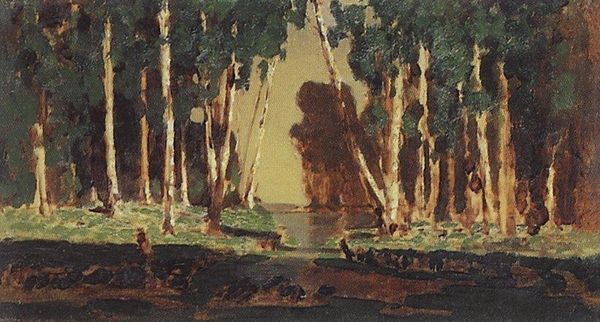
painting, plein-air, oil-paint
#
tree
#
snow
#
sky
#
painting
#
plein-air
#
oil-paint
#
landscape
#
impressionist landscape
#
figuration
#
oil painting
#
forest
#
geometric
#
natural-landscape
#
symbolism
#
russian-avant-garde
#
cityscape
#
realism
Copyright: Public domain
Editor: Here we have Nicholas Roerich's 1912 oil painting, *Ravine*. The bold use of colour to render the forest really strikes me, and there is a slightly melancholic atmosphere about it. What do you see in this piece? Curator: I see a landscape wrestling with cultural and spiritual anxieties of the early 20th century. Roerich, deeply influenced by symbolism and the Russian avant-garde, presents a world that’s seemingly idyllic but vibrates with underlying tensions. The ravine itself – is it a metaphor for social division, perhaps, or the chasm between humanity and nature? Editor: That's interesting. I was mostly focused on the aesthetics. The boulder in the foreground seems to dominate everything, though. Curator: Exactly. Consider how the boulder acts as a barrier. It blocks our direct view, forcing us to contemplate what lies beyond, in the depths of the ravine, and consider the obstacles–both literal and metaphorical–in our own lives. Is Roerich inviting us to reflect on the societal impediments of his era or perhaps more generally to analyse access to natural resources and consider how class and social position create a ravine? How do you perceive the overall impact now, considering the period's turbulent sociopolitical landscape? Editor: Thinking about it that way, the painting feels less like a simple landscape and more like a statement about being blocked from progress or understanding. The detail almost feels too curated and perfect in a way. Curator: Precisely! Roerich's *Ravine* encapsulates how landscape art can be so much more than just a pretty picture; it's a space to interrogate power dynamics and reflect on collective identity. Editor: I'll never look at another landscape painting the same way again. I appreciate how you’ve helped me think about art's function within wider historical and social forces. Curator: And I admire your insightful observations; they’re a great reminder of art’s ability to generate conversations and invite engagement with ideas that touch upon contemporary culture.
Comments
No comments
Be the first to comment and join the conversation on the ultimate creative platform.
